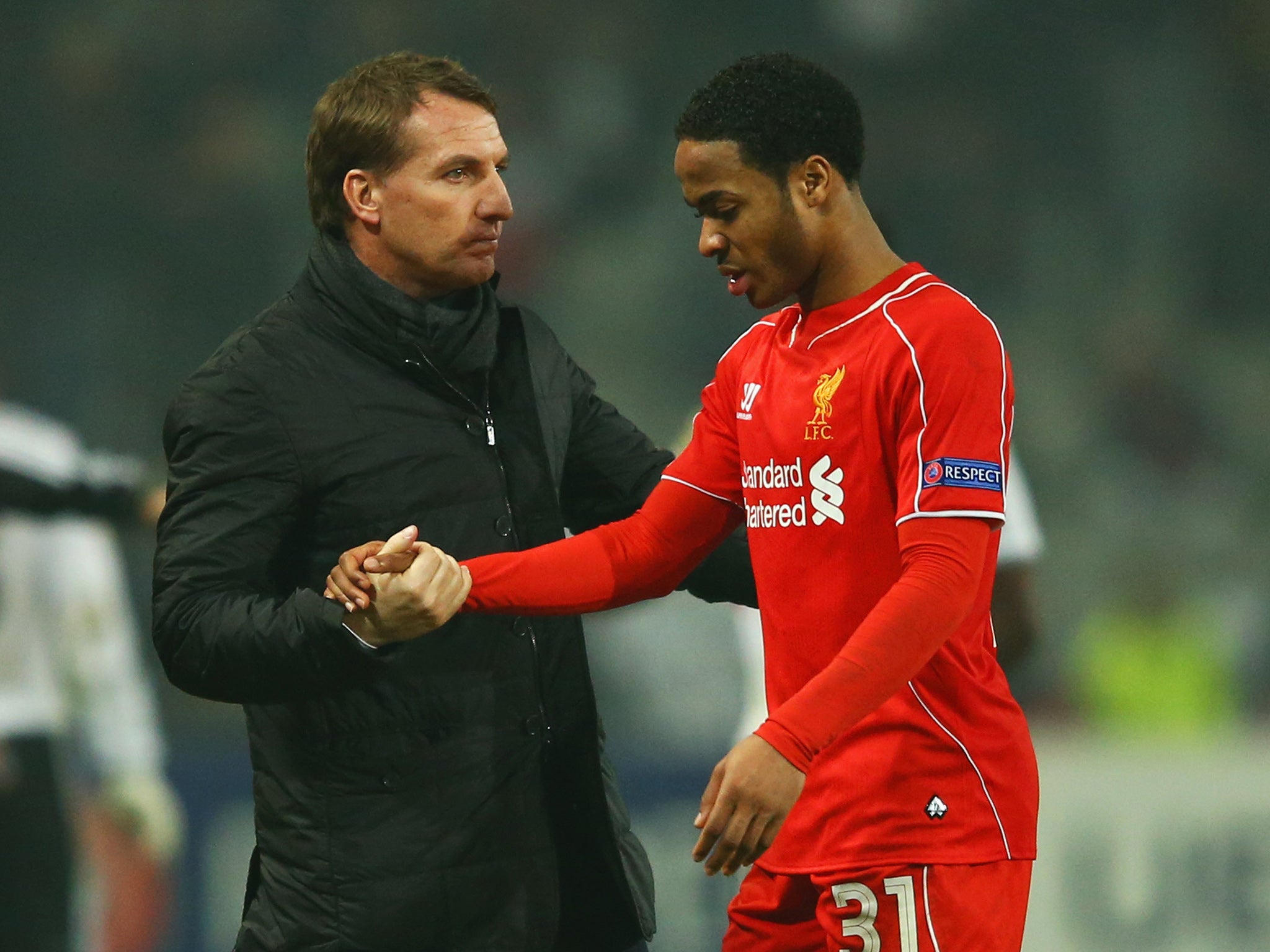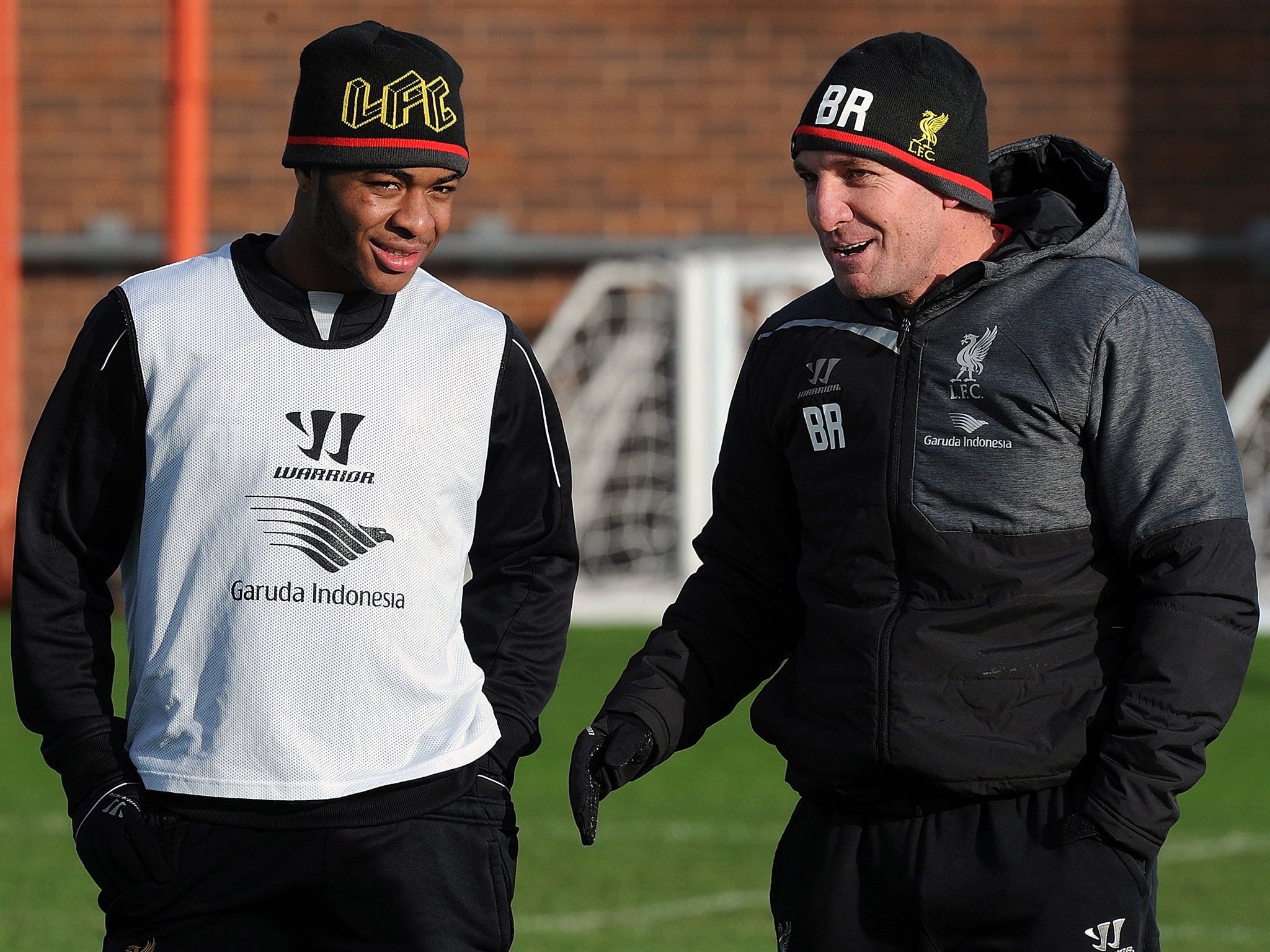Manchester City vs Liverpool: Raheem Sterling learnt lessons over five years that convinced him to quit Reds
The City winger faces his former club for the first time after his controversial £49m move. However, Simon Hughes hears how the lessons he absorbed in five years at Liverpool prompted his departure

Panic gripped the decision makers at Liverpool when Raheem Sterling disappeared in the hours before he was due to sign the long-term contract with the club that, in 2010, would take him away from Queen’s Park Rangers and keep him from the clutches of Manchester City, who supposedly were proposing a quicker route towards financial security.
Officials were dispatched and a search began for the 15 year old across the grounds of the club’s academy facility in Kirkby, with a genuine fear spreading that someone from City had found a way to smuggle him out and convince him their option was, in fact, the wiser one to take.
The hunt was brief, however. On inspection of the outdoor Astroturf training pitches, Sterling was found alone, kicking a ball against a fence and practising his control. Those present remain convinced his quest for self-improvement was deeply entrenched and already well underway.
The story reveals a side to Sterling that critics judged to have been lost now, taking into account the manner in which he left Liverpool in the summer for City when the chronicle of the separation was dominated by the potential economic gain of the individuals involved, as well as the supposed guidance – or interference – of agent Aidy Ward.
It was overlooked that Ward, five years ago – then a representative at the Impact Sports Management Group, where he took care of Sterling’s off-field affairs along with Rob Segal – had encouraged the forward to choose Liverpool over City having been impressed more by what the Anfield club had to offer at the time.
After introductions to Steven Gerrard and Fernando Torres on a tour of the Melwood training ground, Ward and Segal recognised Sterling was being asked to join a Champions League club at first-team level, one that had been in the competition for the previous six seasons and won it in 2005 under a manager Rafael Benítez, whose new five-year contract gave him increased influence over the youth structure that Sterling would be integrated into.
As the winger’s stock rose at Anfield – thanks largely to a clear ambition as well as a self-belief that did not stray towards arrogance, according to those who knew him best at Liverpool – the club’s performances retreated. The departures of key figures like Benítez, Torres, Luis Suarez and finally Gerrard all contributed in some way towards just one Champions League campaign during that time, which concluded under Brendan Rodgers a year ago with a miserable exit at the group stage.
By the end of last season, Sterling’s relationship with Rodgers was healthy enough, yet Ward, his agent, believed the manager was taking advantage of the understanding between the pair by reminding anyone who would listen of his involvement in his client’s development.
Ward – who, significantly had by then separated from Segal and had taken sole responsibility of Sterling’s representation – was even suspicious Rodgers had instructed the club’s in-house photographers to picture him with the player during training sessions, offering the impression that a guardian was at work.

Sterling and his advisor weighed all of the conditions together, buying into the idea that City’s renewed interest and the financial package they were offering reflected their commitment to him. Meanwhile, they took a hard-eyed view of Liverpool’s unrelenting claim to greatness, especially considering City had caught up and raced ahead in the criteria – the Champions League – where they trailed at the point of his arrival on Merseyside.
Then, he joined a club where Benitez had a say in all football operations. The Spaniard had long bickered with academy director Steve Heighway and with the former Liverpool player gone, Benitez encouraged a new recruitment programme which focused on finding the best young British players from across the country rather than mainly in the north west of England.
Benitez’s edict was followed by his successors Roy Hodgson and Kenny Dalglish and it led to the purchases of Jordon Ibe from Wycombe and Jerome Sinclair from West Bromwich Albion and both, like Sterling, have since reached Liverpool’s first team.
Yet there were others that did not make it so far; others like Dave Moli who, exactly a month Sterling’s junior, joined Liverpool at an even younger age, 14, having excited scouts monitoring Luton Town.
Moli was given the same houseparents as Sterling near St Helens, where they lived in a four-bedroom semi-detached property with Peter and Sandra Reeves, a couple in their early 60s whose memories of the period are positive, largely because of Sterling’s polite manner and clear appreciation of their help.
Though Sterling’s ascent towards Melwood and Liverpool’s first team was rapid, Moli did not earn the same opportunities. Sterling became exposed to the ruthlessness of the professional game through the experiences of his friend, who was allowed to join Wolves in 2012, with Liverpool opening the door for the striker’s departure having decided not to offer him another contract.
While Moli returned to England at the start of this month, having played in the Maldives, to sign for Southern League Bedford Town, another of Sterling’s closest companions in the early days at Rainhill High School was Henoc Mukendi, who has since given up football altogether. His passion for the game was stained by his last few seasons at Liverpool where a succession of inappropriate and ultimately unsuccessful loan moves drained his spirit.
Sterling was perceptive enough to absorb valuable lessons from this and began to appreciate – at a club as transient as Liverpool – prospects can shift, especially when managers move on and philosophies alter.
He only started playing competitively as a nine-year old with the Alpha and Omega youth team based in Kingsbury in north London and his relatively late admission into football meant he would have to learn its different shades quickly.
QPR were the first professional club to have a look at him after Brent-based scout Peter Moring made a recommendation to John O’Brien, who was in charge of the club’s Under-16s side. Moring was later paid £50 for the tip after the head of recruitment, Joe Gallen, put Sterling on the longest youth registration contract possible, lasting five years.
Gallen thinks he sealed the deal by buying Sterling a pair of boots and a tracksuit from Brent Cross Shopping Centre. “We were fortunate that Raheem probably didn’t realise how good he was,” Gallen told The Independent. “His entry into football was a little later than other kids so there wasn’t much clamour for his signature. He was a bit of an undiscovered talent in that sense. But I don’t want to claim that we saw something that others did not.”

It was only when Sterling began training with England’s youth teams that the possibility of him leaving QPR became real. “We were a smaller club and a lot of the other boys at bigger clubs were earning a lot more money than Raheem,” Gallen added. “I’m sure they speak about wages and this is when it becomes very difficult for clubs like QPR to keep their best players. The same thing happened with Dean Parrett who went to Tottenham.”
It was a performance for England Under-16s that convinced scout Mark Anderson to call his boss, Frank McParland, Liverpool’s academy chief. Sterling’s lightning pace had earlier prompted Anderson’s brother, Lee, to pick up the phone after a game against Crystal Palace.
The chase was on. That Sterling arrived at Liverpool owed much to the persuasive powers of those in charge, with McParland convincing his mother Nadine that her son would not only get a football education at the very highest level with Liverpool but a reasonable academic one too.
Despite being placed at Vernon House in London, an institution that caters for pupils with special needs, having arrived from Jamaica aged seven without the schooling children enjoy here, Sterling emerged from Rainhill High with five GCSEs including qualifications in the core subjects. He took fewer exams than some other students only because of his football commitments.
While Sterling took the opportunities presented to him by Liverpool and bettered himself, there were spikes as the club regressed. Ultimately, it explains his departure.
Join our commenting forum
Join thought-provoking conversations, follow other Independent readers and see their replies
Comments